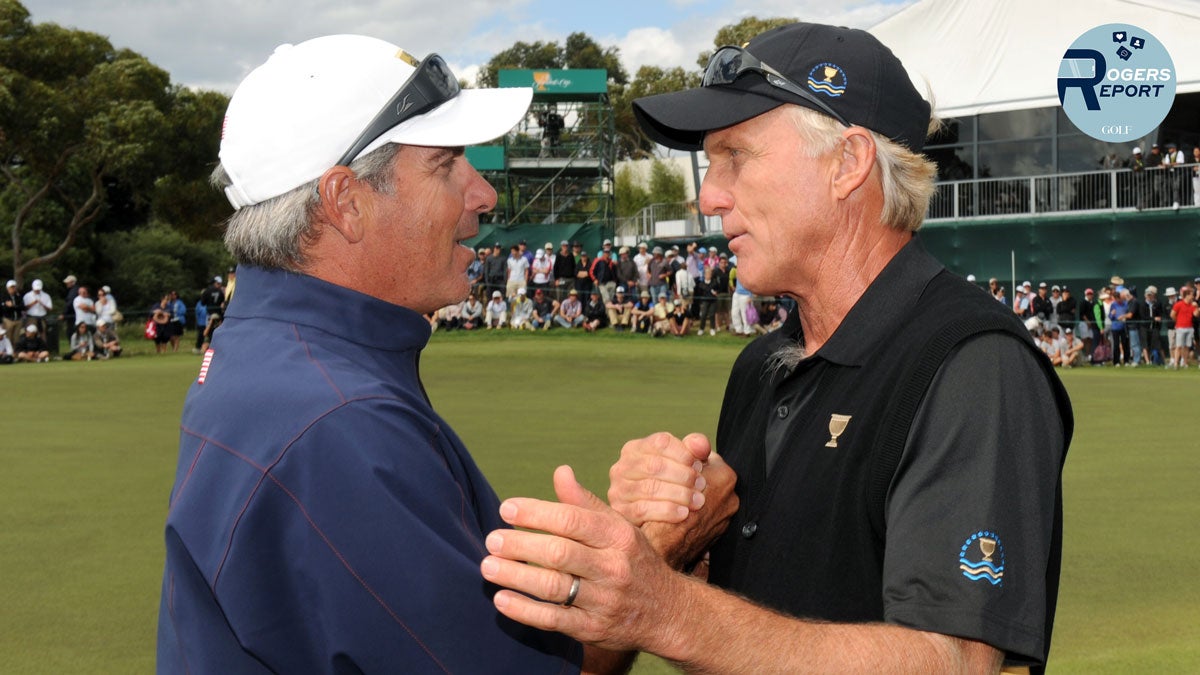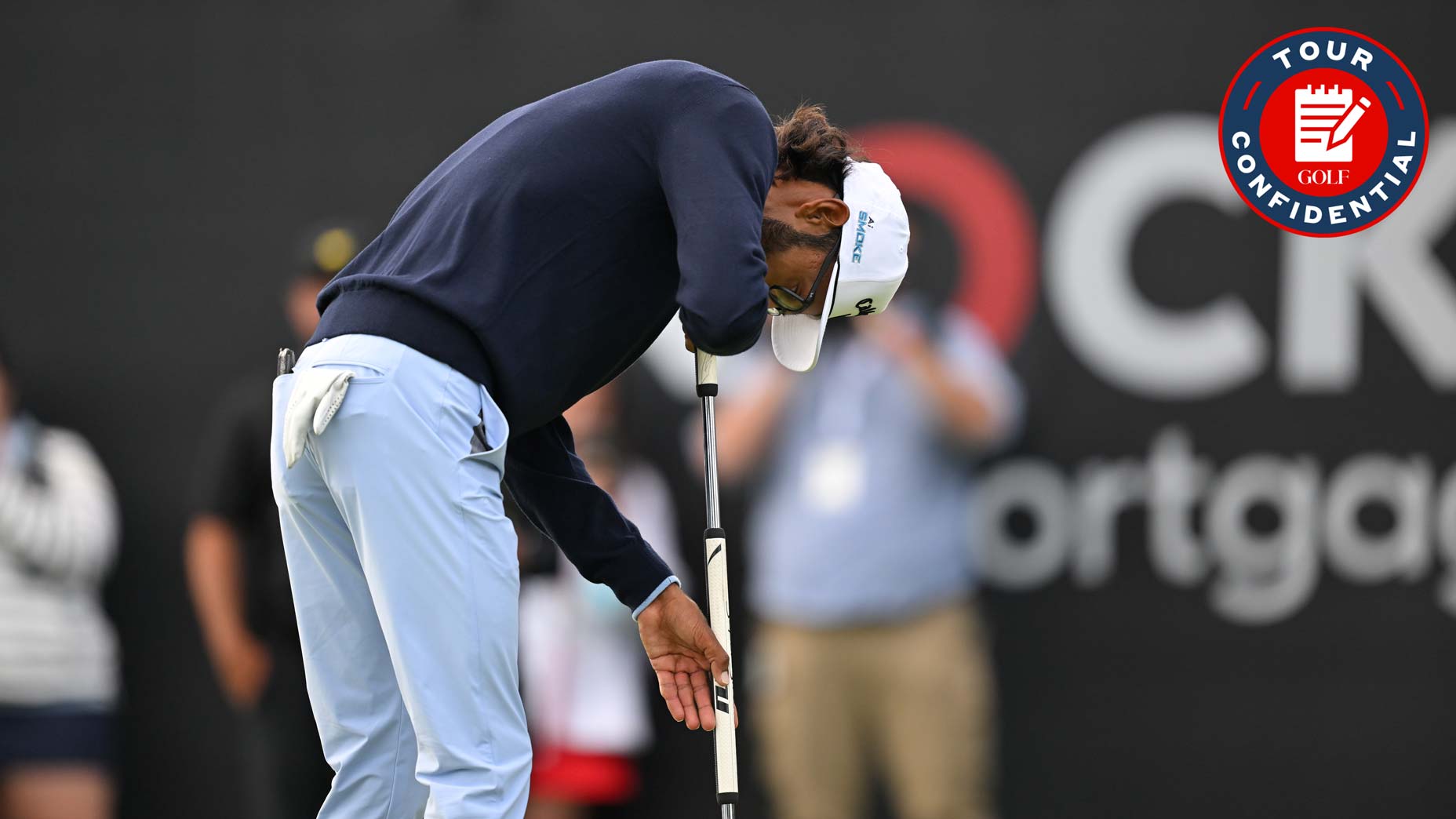What do we make of the PGA Tour’s new Designated Events Model?

PGA Tour commissioner Jay Monahan sent a memo to players on Wednesday, outlining the changes to 2024 designated events.
Getty Images
The PGA Tour announced details of its new Designated Event Model on Wednesday, which beginning next season will mean select designated events will consist of smaller fields and a no-cut format. There will also be opportunities for PGA Tour members not qualified to play their way into these events throughout the season. You can read up on all of it right here, but we also called in three GOLF writers for an emergency Tour Confidential roundtable to break it all down.
Josh Berhow, managing editor (@Josh_Berhow): James, Dylan, what are your first impressions here? Good move or bad?
James Colgan, assistant editor (@jamescolgan26): Josh, I’ll proudly be the bearer of a controversial opinion to start things off here: I love it.
Dylan Dethier, senior writer (@dylan_dethier): I’ll speak for the people: Big picture, it’s mostly good — with one exception. How ‘bout you, Josh?
Berhow: James, the Twittersphere does not seem to agree with you, and I’m not sure I do either (although Max Homa helped persuade me a little). I need you to elaborate, because to me, this just seems like we are awarding the top players even more and hurting the overall product, no matter what the PR spin is.
Colgan: Call me a crank, but I think most fans care WAY more about the top 20 players in the world than they do about the next 150. LIV was smart to make this gamble in their own competitive structure, and the Tour is smart to make the change adding to it. For those watching, attending or caring about the Tour’s biggest events, they KNOW when they’ll see their favorite players. That’s important.
Berhow: Yes, but should they be guaranteed the weekend? I know the sponsors want the big names there on Saturday and Sunday, and of course I do too, but the no-cut aspect takes away some of the competitiveness, in my opinion.
Dethier: Don’t you want to know the one exception?
Colgan: Yes!
Dethier: It’s the cut thing! Judging from the immediate reaction on social media, golf fans hated this new proposal. But dig a little deeper and I think that mostly stems from a revulsion to guys playing meaningless golf on Saturdays and Sundays, plodding around and shooting 74. We can get into the other changes, including the limited-field stuff. But damn, golf fans love cuts. I think if you institute a cut down to, say, top 50 and ties, that would fix everything. It’s no coincidence that this is basically the exact recipe at the Masters.
Colgan: That seems like a pretty reasonable compromise, but I honestly think the cut is irrelevant to begin with in a 70-player event. The only time we care about the cutline at the Masters is when Tiger is fighting his way to stay under it. Otherwise, we’re more focused on the leaders anyway!
Dethier: Yeah, I guess that’s my point. At the Masters, we’re only focused on the leaders anyway. A few guys miss the cut every year, sure, but not that many. This way, the guys that make the weekend still feel like earned viewing on Saturday and Sunday.
Berhow: As a golf media person, we watch A LOT of golf, and so do a ton of golf fans out there. It gets to be too much, even for us golf sickos. Fall events. December events. Below-average fields between majors. However, I can’t remember the last time I was as excited for a non-major, regular Tour event than I was last month with both the WM Phoenix Open and Genesis Invitational. Awesome fields, great courses. It felt like the start of the golf season. And you know what? If there wasn’t a cut for either of those, I’m not near as invested. The top players are millionaires, so they don’t need the cut to survive, but the cut makes the event feel bigger. Like it matters. No cuts and smaller fields, even if it’s 70 to 80 players, gives off too much of a guaranteed cash grab exhibition vibe to me.
Dethier: Just to jump in there: I don’t think Phoenix will be a designated event next season, so that field size shouldn’t change. And Rory McIlroy mentioned the invitationals might stick to their history and keep a cut, for old time’s sake.
Colgan: Phoenix not being a designated event in ‘24 would be a colossal mistake for the Tour. Colossal.
Berhow: So let’s talk about the actual field size: 70 to 80 players. Too big? Too small? Just right?
Colgan: Max Homa made a pretty salient point about how small fields in designated events actually help protect NON-designated events. (The thinking being that too many players in DEs would hurt schedule availability for NDEs.) I generally tend to agree, but much smaller than 80 and we’re suddenly looking at Formula1. That’s no bueno, too.
Dethier: I mean, Formula 1 is awesome. But I agree you need a slightly larger pool for golf. In my mind the perfect number is slightly closer to 100, but where they’ve settled — 70-80 — seems like a decent number. The mix of qualifiers seems good, too, combining the top 50 pros from the previous year with the top 10 from the current year plus a few pros in form. We can quibble about the details — what’s the right number of recent qualifiers? — but having a mix of top pros from last year plus hot players with cool stories like Eric Cole could strengthen the product.
Berhow: I agree. For as much as I don’t like the no-cut rule, even if it’s only for a handful of the designated events, I do think the way the Tour is putting together this field makes sense: top players plus others who have the chance to play their way in from previous events. But I also think what’s happening with the Tour right now reminds me of the Netflix “Full Swing” docuseries. The producers there were challenged with creating a show that catered to both hardcore golf fans and non-golf (or even non-sports) fans. That meant explaining what the cut was and things of that nature instead of diving even deeper into other big, juicy storylines. I totally understand it, but I think that’s what the PGA Tour is dealing with too: How does it accommodate its stars, but also its lower-tier card holders? It can’t be easy.

Colgan: Talking about “Full Swing” with Dylan in the chat feels a bit like wearing the band t-shirt to the concert (love you, DD). Nonetheless, you’re right Josh, it’s NOT easy to cater to the regular pros, but that’s also how things work in every other major sport. If it feels like the Tour is changing the rules to cater to the best players in the sport, then might I introduce you to the last 15 years of “roughing the passer” legislation in the NFL?
Berhow: Touche.
Colgan: Anyway, speaking of stars, some of LIV’s best and brightest have been keen to point out the — erhm, commonalities — between the Tour’s new format and LIV. Are they right to be feeling copied?
Dethier: Are these changes happening now because of LIV? To some extent, yes. To quote the philosopher Patrick Cantlay, from this afternoon: “If a product or company doesn’t have competition, the incentive to innovate is low.” But anybody telling you this format is “the same” as LIV is being disingenuous. The designated events system is appealing because it represents the top of the pyramid. It’s extremely meritocratic; there is an entire infrastructure built around getting to the top that extends down through the full-field events, Korn Ferry Tour events, Q-School, PGA Tour Canada, etc. There will be a really fun fight to get into that top 50. There will be a really fun fight to get into designated events. The Tour’s Cinderella stories will continue; they’ll just look slightly different.
Berhow: If you are a LIV player, of course you are pointing out the similarities. But as Dylan mentions, it’s quite different. The Tour is making a smaller but powerful field out of its top players for a no-cut tournament that represents about one-sixth of its tournaments played throughout the year. LIV’s 48-player no-cut fields are the norm and not nearly as strong. But I do love the jabs going back and forth; that’s going to make following all of this even more fun.














